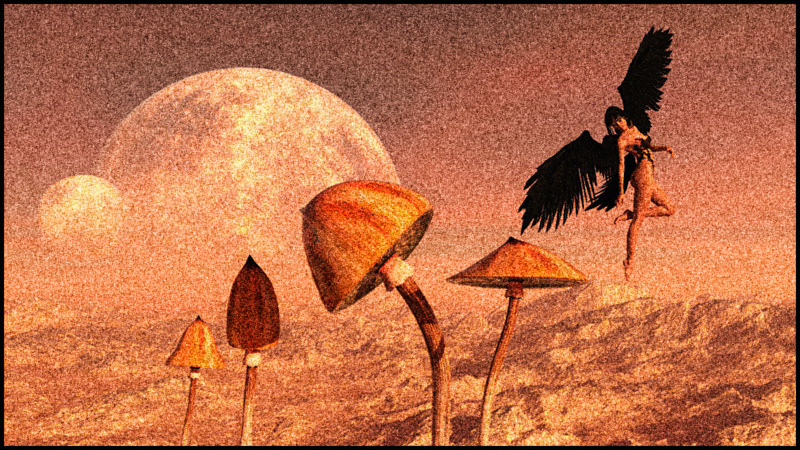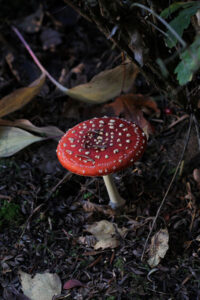Table of Contents [show]

[ez-toc]The burgeoning field of psychedelic research has opened up fascinating avenues for understanding consciousness, leading to a renewed interest in compounds found in nature, such as psilocybin, a naturally occurring psychedelic compound in certain mushrooms[1]. There is an increasing body of evidence supporting the notion that these ‘magic mushrooms’ can play a key role in expanding consciousness and promoting mental wellbeing[2].
Psilocybin is found in over 200 species of mushrooms, primarily belonging to the Psilocybe genus[3]. Identifying psychedelic mushrooms in the wild requires a keen eye and knowledge of mushroom biology. It is important to note that foraging for wild mushrooms should be done responsibly and safely, as some species are poisonous.
The Enigma of Consciousness: Can We Expand It?
The concept of consciousness has fascinated scientists, philosophers, and scholars across various disciplines for centuries. Despite significant advancements in understanding the workings of the human brain, the nature and origin of consciousness remain a subject of intense debate and exploration. This essay will delve into the current state of scientific understanding of consciousness and explore the range of perspectives that scientists hold regarding this profound enigma.
The Materialist View: One prevailing perspective among scientists is rooted in materialism, which posits that consciousness is an emergent property of complex brain activity. According to this view, consciousness arises from the intricate interactions of neurons, synaptic connections, and electrical impulses within the brain. Materialist scientists argue that understanding the physical processes occurring in the brain will eventually unravel the mysteries of consciousness.
Neurobiological Approaches: Scientists in the field of neuroscience employ a variety of experimental techniques to investigate consciousness. Through neuroimaging studies, such as functional magnetic resonance imaging (fMRI) and electroencephalography (EEG), researchers have made strides in identifying brain regions associated with conscious awareness. The study of brain injuries and disorders, such as locked-in syndrome, also sheds light on the neural correlates of consciousness. These approaches contribute valuable insights into the relationship between brain activity and subjective experience.
Integrated Information Theory (IIT): A prominent theory proposed by neuroscientist Giulio Tononi, the Integrated Information Theory (IIT), suggests that consciousness arises from the integration of information within a complex system. According to IIT, the more information is integrated and irreducible, the higher the level of consciousness. This theory attempts to quantify consciousness and provides a framework for understanding its fundamental properties.
Quantum Consciousness: An alternative and controversial view suggests that consciousness might have roots in quantum physics. Proponents of this perspective propose that certain quantum phenomena, such as superposition and entanglement, may play a role in the generation of conscious experiences. However, the application of quantum principles to the study of consciousness is still in its infancy, and the scientific community remains divided on its validity.
Evolutionary Significance: Another aspect considered by scientists is the evolutionary significance of consciousness. Some argue that consciousness may have evolved as an adaptive trait, conferring advantages such as self-awareness, introspection, and the ability to plan and strategize. By examining the cognitive abilities of other animals and studying the evolutionary history of the brain, scientists hope to gain insights into the origins and functions of consciousness.
Challenges and Future Directions of Psilocybin in Mushrooms
Despite decades of research, the study of consciousness presents significant challenges. The subjective nature of conscious experience makes it difficult to quantify and objectively measure. Additionally, the lack of a unified definition of consciousness hampers scientific progress in this field.
Looking ahead, advancements in technology, such as artificial intelligence and brain-computer interfaces, offer promising avenues for unraveling the mysteries of consciousness. Simulating conscious states in computational models and studying brain activity at finer scales may provide deeper insights into the nature of consciousness. Collaboration across disciplines, including neuroscience, philosophy, psychology, and physics, is crucial for developing a comprehensive understanding of this complex phenomenon.
Scientists hold a range of perspectives on consciousness, reflecting the multifaceted nature of this intriguing subject. While materialist views dominate the scientific discourse, alternative theories, such as quantum consciousness, continue to provoke debate and exploration.
As scientists continue to probe the depths of the human mind, it is through their collaborative efforts and dedication that we may ultimately unlock the secrets of consciousness, further expanding our understanding of the nature of reality and the essence of being human. And part of the expanding of consciousness can come from careful use of Psychedelic Mushrooms.
Species and Identification of Mushrooms with Psilocybin
The most famous of these is Psilocybe cubensis, a species that thrives in humid, subtropical environments. P. cubensis features a golden-brown cap that is often bell-shaped, becoming more convex with age, and a white-to-yellow stem[4]. A blue bruising color on the stem or cap is an indication of the presence of psilocybin and is a characteristic trait of this species.
Another common species, Psilocybe semilanceata, or the Liberty Cap, is found in the damp grasslands of North America, Europe, and Asia. This species has a distinctive conical or bell-shaped cap that resembles a pointed witch’s hat, hence the name ‘Liberty Cap'[5].
Psilocybe cyanescens, known as the ‘Wavy Cap’, can be identified by its caramel or chestnut-brown cap, which becomes wavy and irregular as it matures. This species is common in North America, Europe, and parts of Asia, typically growing on wood debris[6].
Expanding Consciousness With Psilocybin (Psychedelic Mushrooms)
 The use of psilocybin mushrooms for consciousness expansion dates back to prehistoric times. Many cultures have incorporated these mushrooms into spiritual practices and healing ceremonies[7]. Today, this traditional knowledge aligns with scientific research, suggesting that psilocybin has significant potential for promoting psychological growth and self-understanding[8].
The use of psilocybin mushrooms for consciousness expansion dates back to prehistoric times. Many cultures have incorporated these mushrooms into spiritual practices and healing ceremonies[7]. Today, this traditional knowledge aligns with scientific research, suggesting that psilocybin has significant potential for promoting psychological growth and self-understanding[8].
A landmark study published in 2006 by Johns Hopkins University revealed that 67% of participants rated a psilocybin experience among the top five most meaningful events of their lives[9]. Subjects reported profound experiences, feelings of interconnectedness, and enhanced appreciation for life. Furthermore, follow-up studies have demonstrated long-lasting positive changes in behavior and attitude[10].
Psilocybin’s ability to temporarily dissolve normal patterns of thought, termed the ‘default mode network’, appears central to its consciousness-expanding effects[11]. By disrupting these habitual thought processes, psilocybin can provide a new perspective, allowing individuals to explore their mind in ways not usually accessible[12].
While the potential benefits of psychedelic mushrooms are indeed promising, they must be approached with respect and caution. Risks exist, including psychological distress during intense experiences, and individuals with a family history of schizophrenia or psychosis are generally advised to avoid them[13]. Safety and maximization of potential benefits are more likely in a controlled, supportive setting[14].
In conclusion, psychedelic mushrooms, rich in psilocybin, offer a natural gateway to explore the intricacies of the human mind. Their potential in expanding consciousness and contributing to mental wellbeing warrants further research and responsible use, respecting their power and historical significance.
- Dave Foster 2023
Footnotes: Incomplete
[1] Nichols, D.E. (2016). “Psychedelics.” Pharmacological Reviews, 68(2), 264-355.
[2] Carhart-Harris, R.L., & Goodwin, G.M. (2017). “The Therapeutic Potential of Psychedelic Drugs: Past, Present, and Future.” Neuropsychopharmacology, 42, 2105-2113.
[3] Guzmán, G. (2008). “Hallucinogenic mushrooms in Mexico: An overview.” Economic Botany, 62(3), 404-412.
[4] Stamets, P. (1996). “Psilocybin Mushrooms of the World: An Identification Guide.” Ten Speed Press.
Further Reading in Spinfuel
Psychedelic Mushrooms for Medical Purposes: Unveiling Nature’s Potential
Funguyz Magic Mushrooms Chocolate: A New Delectable Way to Enjoy Magic Mushrooms
5 Great Ways Mushrooms Are Changing The Future Of Health
Edible Mushrooms – How to Identify While Foraging for Food in the Wild




